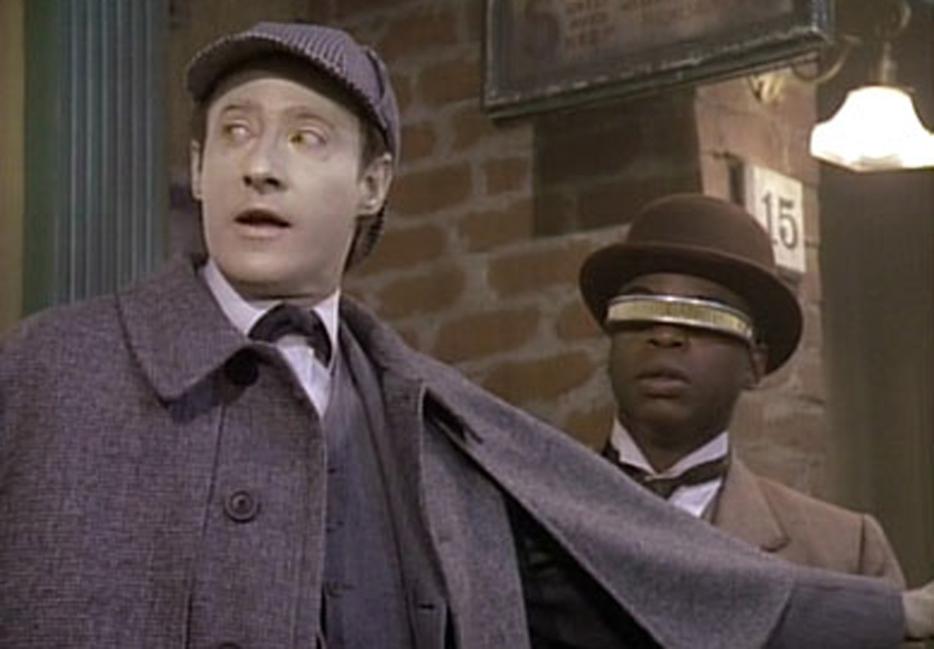Of the many reasons Star Trek: The Next Generation appealed to my nerdy teenaged mind, the holodeck was perhaps the most significant. Granted, like most adolescents, my imaginings about what I’d do with technology that allowed you to create, and then step into, believable fictional worlds tended to focus on sexual adventures with the crew of the Enterprise. But at the same time, it also spoke to a mind equally formed by the worlds of literature and video games: here, in the guise of a distraction, was a way to enter a place and then return from it, changed and renewed.
Re-creating the world is among the most basic of human desires; fiction of all kinds remakes the world, ever so slightly changed. That habit is about to enter its next, holodeck-like phase, however, thanks to two technologies that are soon to go mainstream: 3D scanning, which can map three-dimensional spaces, and virtual reality, which can then aurally and visually immerse you in them.
Useful applications immediately come to mind: crime scene recreations, historical re-enactments, or, of course, as one gaming magazine pointed out, a new kind of horror experience. But at a moment in history in which it is difficult to imagine something truly new—you know that old line about it being easier to imagine the end of the world than the end of capitalism—I wonder if there isn’t a promise, both ominous and hopeful, in sinking our senses into novel digital iterations of the world we know.
3D scanning of various kinds has been around for a while, but it’s the “Internet of Things” and its emphasis on putting sensors into everything that has made it relevant again. Take Project Tango, a special side-project from Google. It’s an attempt to build a smartphone outfitted with an array of sensors and cameras enabling it to read and then record the three-dimensional world around it. Rather than photos, videos, or measuring things such as temperature, the aim of something like Tango is to apprehend—and maybe even comprehend—the world as humans see it.
At its root, then, Tango is part of the long march in which the aims of technology and art seem to converge: that, in order to better understand the world and ourselves, we must re-make it in order to see it more clearly—almost as if we need life to be temporarily reduced and held at a distance in order to grapple with its complexity. Though the video for the project tends to focus on slightly mundane things such as simple games or imagining what a piece of furniture would look like in your home, it speaks to the ways in which new ways of seeing “augment” reality, allowing us to envision where we are with new possibility.
So it’s perhaps the tying together of such technology with so-called “virtual reality” that seems to be the most intriguing application. Though virtual reality is a generic term for the idea that digital is its own space, it also refers to a specific type of tech—in which a headset outfitted with screens and headphones immerses a person in a digitally created fictional space.
To do that convincingly takes some serious hardware, and it’s only now that technology has gotten to a point to make it viable and immersive. Though not quite ready for release, reports from those who have tested devices like Oculus Rift and Sony’s Project Morpheus suggest that demos that place the user in a shark cage or allow her to move through a fantasy world are impressive, and impressively realistic.
For years, VR was the symbol of all that was good and ill about digital technology. It highlighted the fears about being consumed by this alluring new space, but carried along in that very consumption is the idea of transformation. If tech and art both share a desire to put the self into another space—or return the self to our own space, renewed—virtual reality seems to speak to a technological ground for the holy grail of both the web and for art, too: empathy—that in placing ourselves in another’s view, we might come to understand what it is to be someone else.
Say what you will about the modern world, but you’d be hard pressed to convince anyone that there’s a surfeit of empathy. Large forces have made it such that, in the business of getting through day-to-day life in crowded urban spaces, considering the needs of the others is hard. What one hopes is that a new aesthetic form that has, as its very basic function, the placing of the self into a new space, might make up the ground for a new kind of concern for humanity at large.
A decade or two ago, the Internet seemed so revolutionary, promising to upend the world we knew by making us more connected and destabilizing that which came before. Today, finding a space online that isn’t just a neat replication of what came before is a challenge; so much for the digital utopia. Yet, beyond the cynicism, it’s a testament to how difficult it can be to see the world differently. Perhaps virtual reality will just be one more distraction amidst many, another way to dull our senses.
It’s why Sony’s initial tagline for VR—that “presence is the killer app”—is worth thinking about. Presence as an idea came under a great deal of scrutiny in the latter half of the 20th century. To philosophers such as Jacques Derrida, presence came to connote an impossible wish for fullness or completeness—that we could understand the world or ourselves in a total way. Whether it was God or Truth or Self, it was the assumed “presence” of those stable things that were guarantors of a comprehensible world.
Virtual reality, like life, will not achieve that goal. No one will, at least for now, put on a virtual reality helmet and truly feel as if they are somewhere or someone else. In these virtual iterations of the real world, though, perhaps there’s still something there: that in immersing the self in imperfect or unrealistic recreations of what is, we might use our newfound holodeck to take a moment and also consider what it is that might be.






